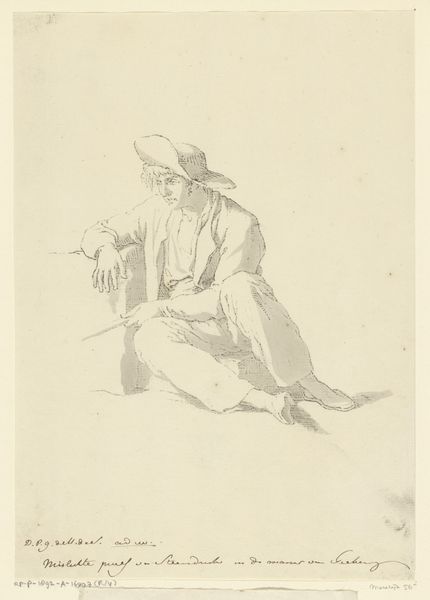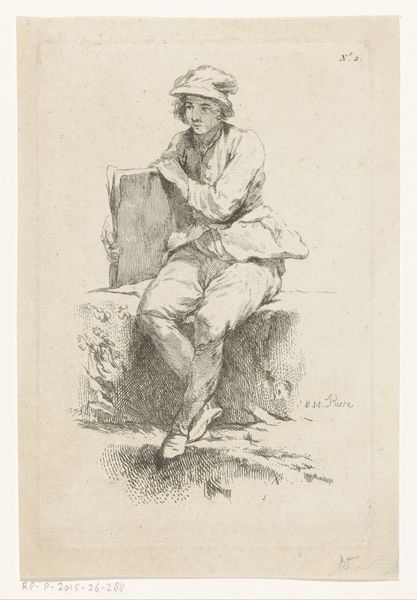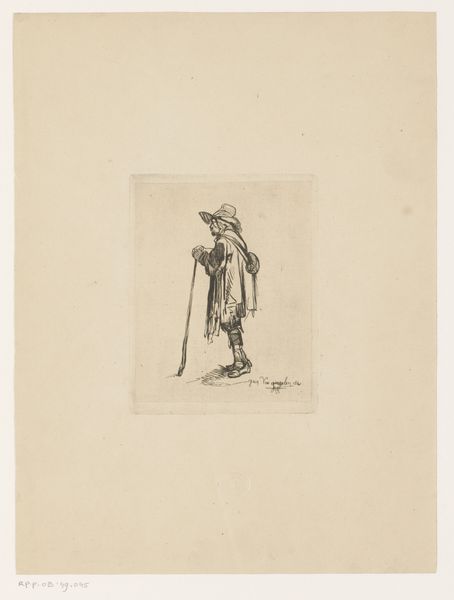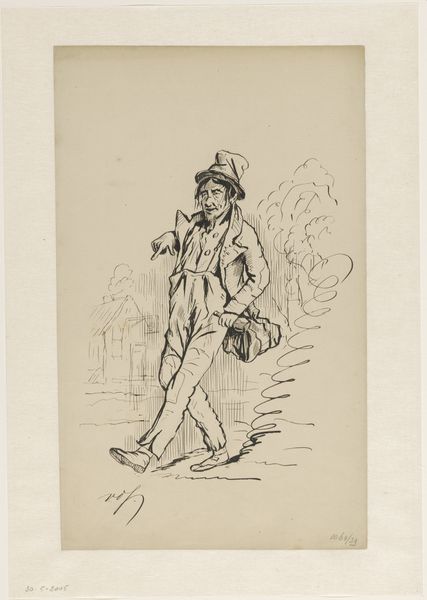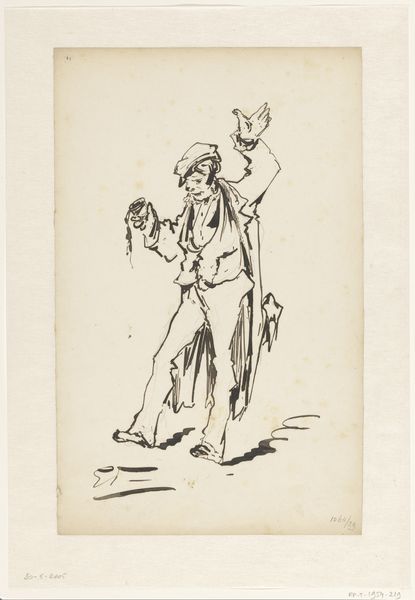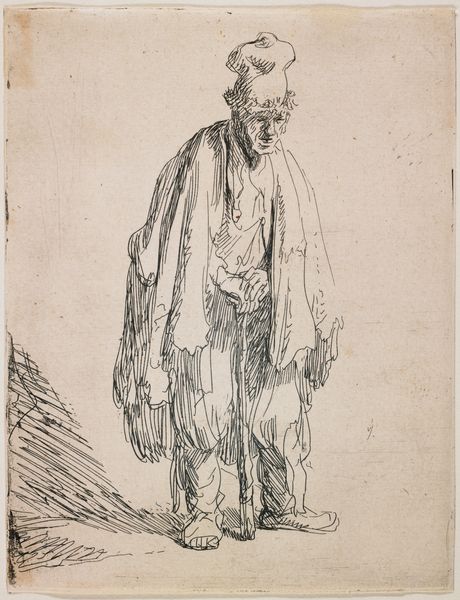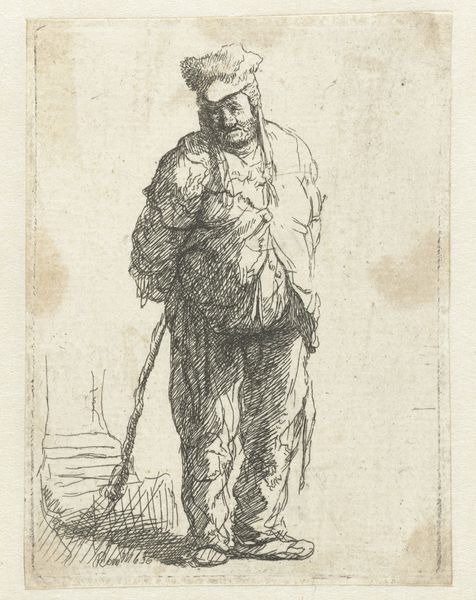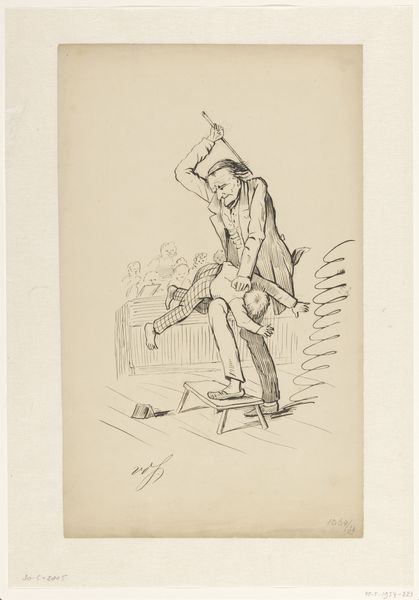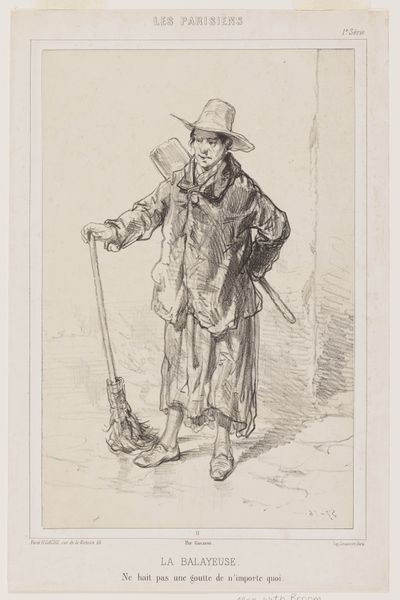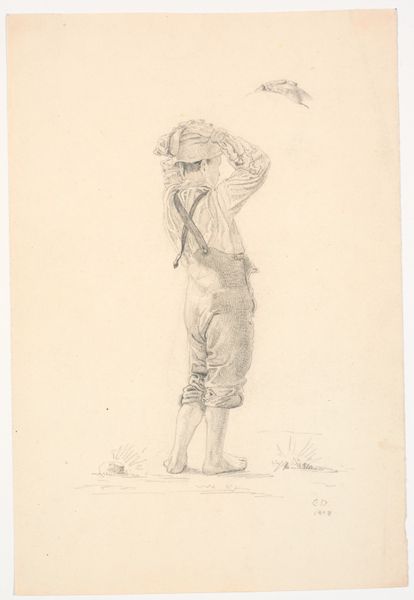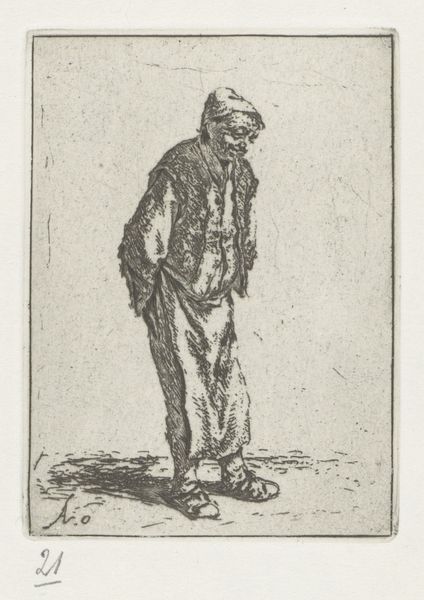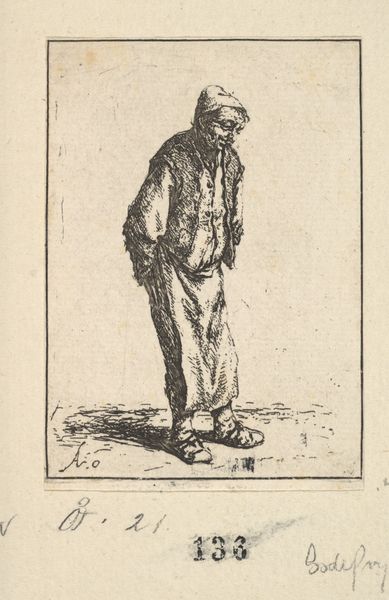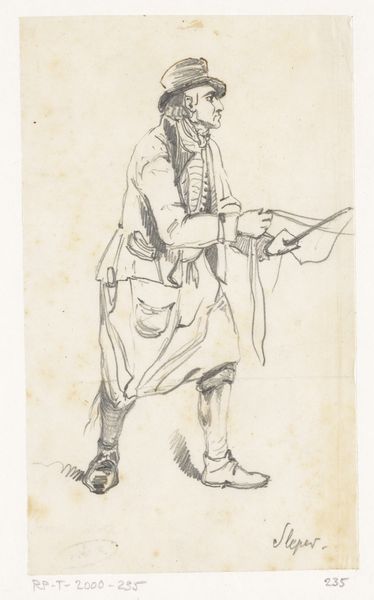
drawing, paper, ink
#
portrait
#
drawing
#
pencil sketch
#
figuration
#
paper
#
ink
#
romanticism
#
sketchbook drawing
#
pencil work
#
genre-painting
#
realism
Dimensions: height 348 mm, width 207 mm
Copyright: Rijks Museum: Open Domain
Curator: "Straatveger," or "Street Sweeper," is the work of a Monogrammist, VDG, dating from somewhere between 1800 and 1900. It’s a drawing, primarily in ink, on paper. Editor: My immediate impression is weariness, almost a forced stoicism. He seems caught between tasks, or perhaps between purpose and resignation. Curator: The composition, typical of Realist genre painting, portrays labor. Let's think about how the materiality of labor intertwines with societal power structures, in particular class. How the choice of medium – humble ink and paper – relates to the subject matter. Editor: Indeed. Look at the economy of the line. See how the scratchy, almost frantic strokes define his clothes and create a sense of texture, suggesting well-worn fabric, repeated repairs, and the daily grind, almost as if he made it himself. Curator: There's a lot to unpack there, certainly his clothing seems hand made and heavily mended. But is it purely about observation? The Romantic leaning suggests an attempt to ennoble the working class, even in a relatively unassuming scene such as this. Think of other artists of the period—how did they navigate the social and political dynamics through representation? What messages about poverty and social stratification are they subtly communicating? Editor: Well, consider the symbolism implicit in the tools he carries, this handmade broom represents, both literally and figuratively, the work of his hands, also, if you zoom out it could suggest that the piece is a metaphor about craft traditions devalued with industrialization. I find it telling, the roughness of the media and composition highlight the contrast between this figure and a polished finished artwork created with mass produced materials. Curator: It offers us, through that rawness, a vital insight into the social hierarchies being challenged—or perhaps simply documented—at the time. How representations of labor contributed to evolving notions of identity. Editor: And the value we place on different kinds of work. Curator: Precisely. Examining 'Straatveger,' even this quick sketch becomes an excavation of history. It is an exercise that is just as relevant in our own day. Editor: A relevant reflection on materiality and labor.
Comments
No comments
Be the first to comment and join the conversation on the ultimate creative platform.
